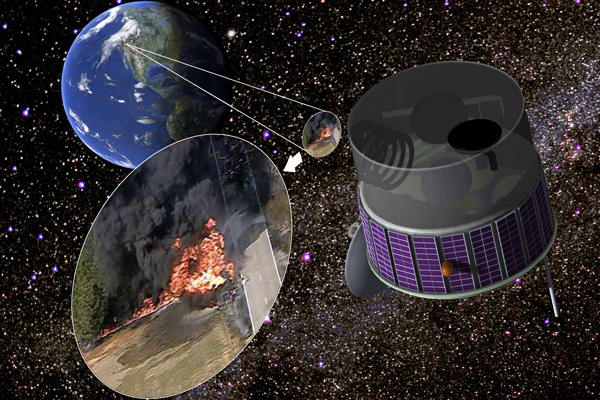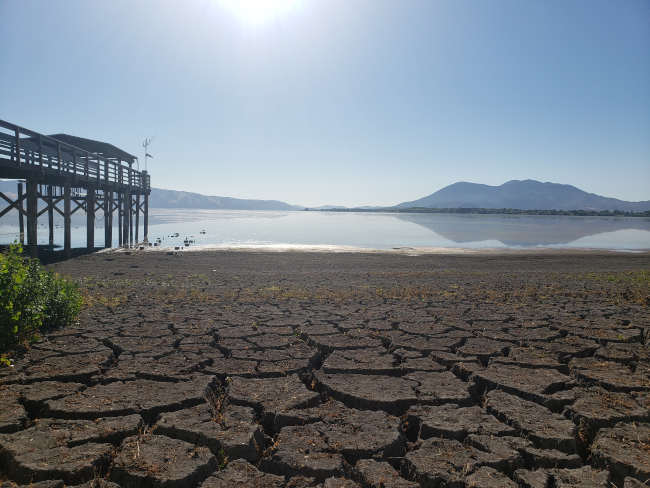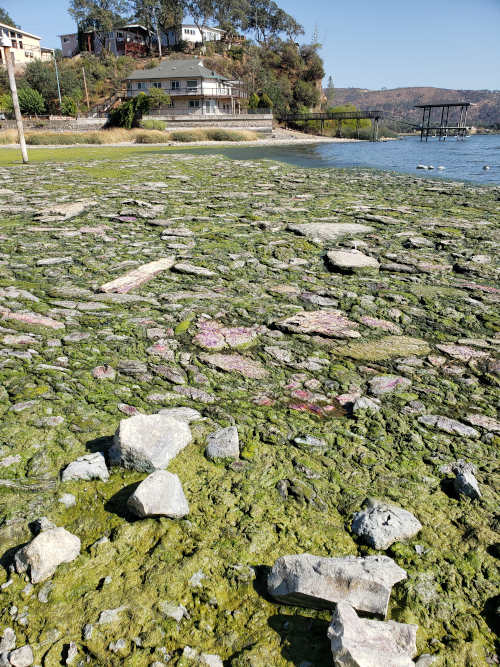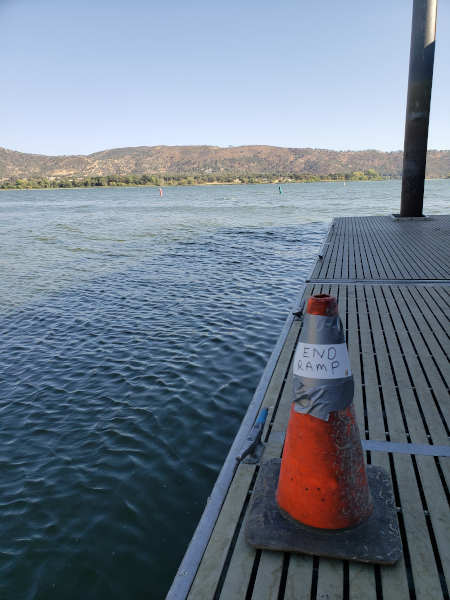- Alex Sosnowski
Storm, wildfire risk to surge with monsoon in parts of West
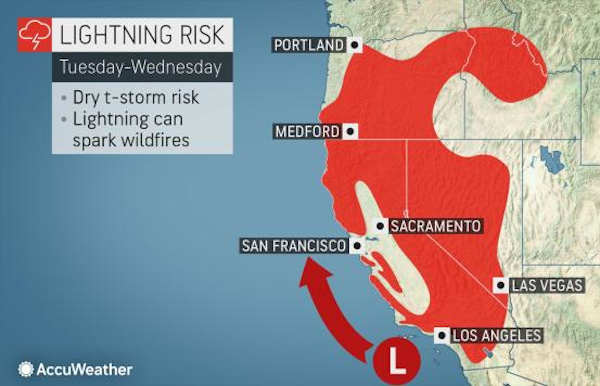
As the North American monsoon continues over the southwestern United States this week, AccuWeather meteorologists say that shifting moisture may allow the concentration of drenching storms to ease up in New Mexico and Arizona.
But storms, some with downpours, some with no rain, are forecast to ramp up in portions of Nevada, California, Oregon and Idaho in the coming days.
Prior to Sunday night, with a couple of exceptions this summer, thunderstorms associated with the monsoon have largely been absent thus far. There have been a couple of incidents of spotty showers and thunderstorms.
During June 17-18, and more recently on July 13, showers and storms dotted Southern California. The storms on July 13, managed to bring 0.10 of an inch of rain to Downtown Los Angeles.
The spotty, little rain that has occurred thus far west of Arizona has done nothing to impact the exceptional drought ongoing in California, Nevada and Oregon.
In California alone, 33% of the state was considered to be in exceptional drought, which is the worst category of drought level, according to data from the United States Drought Monitor.
A drought emergency remained in effect for 50 of the 58 counties or 42% of the population in California. Major reservoirs have plummeted to historically low levels in many cases for this point in the season.
While the overall amount and extent of rain, the newest surge of moisture remains questionable from Southern California and southern Nevada, as well as point farther to the north, there is a concern amongst AccuWeather meteorologists of what mainly dry thunderstorms might bring.
"We often see thunderstorms with little rain and a significant amount of lightning strikes on the leading edge of monsoon moisture and this may be one of those situations," AccuWeather Meteorologist Matt Benz said.
Locally gusty winds often accompany the thunderstorms in the West. The winds may not only kick up dust in the vicinity, but can fan the sparks and flames produced by lightning strikes. With little or no rain to extinguish these flames, multiple wildfires can quickly spread through the dry brush that has been baking in the sun all summer long.
In Las Vegas on early Monday morning, over 13,000 were without power due to thunderstorms.
Any non-flooding rainfall without lightning would be welcomed.
A small number of the storms will manage to bring enough rain to wet the ground and result in a temporary soaking, while a smaller number still can bring so much rain as to lead to isolated flash flooding and debris flows.
"The pattern is pulling a significant amount of atmospheric moisture westward, so it is possible that some communities in Southern California and Nevada get thoroughly soaked with a risk of flash flooding as well," AccuWeather Senior Meteorologist Brian Thomson said.
During Monday morning, showers and thunderstorms managed to unload 0.44 of an inch of rain on Palm Springs, California.
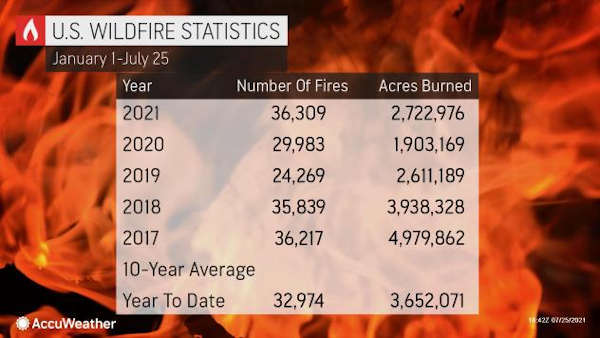
Flash flood watches and warnings were issued across Southern California, southern Nevada and southern Utah on Monday morning. Within 30 minutes after 9 a.m., local time, 0.71 inches of rain was measured in Primm, Nevada, near the state border with California.
As the deluge continued, areas like Pahrump, Nevada, about 60 miles east of Death Valley, saw flash flooding along Highway 160. An estimated .5 to 1 inch of rainfall reportedly fell around the area, with the highest observations pushing 2 inches, according to AccuWeather Senior Meteorologist Alan Reppert.
"These seem to be slow moving storms too, so they can dump a lot of rain in a quick time," Reppert said.
For these reasons, hikers are strongly urged to monitor the changing weather not only at their location, but in the distance as well. Lightning can extend outward a dozen miles or more in extreme cases. A downpour miles upstream can produce a torrent of water through canyons and dry stream beds with a mainly clear sky overhead.
At the very least, most residents will notice an uptick in humidity levels during the first part of this week in the West.
"The westward push of monsoon moisture is moving along with the progression of a storm in the middle levels of the atmosphere," Benz explained.
This moisture will then be drawn northward around a large area of high pressure that remains anchored over the central Rockies and Plains this week.
"This circulation will tend to spread the thunderstorm risk into areas that have already been hammered by wildfires so far this summer in Northern California, northern Nevada, Oregon and Idaho as the week progresses," Benz said.
While some increase in moisture in the air may raise humidity levels slightly over the Northwest by midweek, it probably will not be enough to make a big difference in lowering the potential combustion of natural fuels in the region.
As of Monday night, there were 85 large, non-contained wildfires burning in the United States, mostly in the West, according to the National Interagency Fire Center.
In Northern California, the Dixie Fire, which is only 22% contained, had consumed 198,021 acres and destroyed 36 structures as of Monday night. The cause of the Dixie Fire remains under investigation.
In southern Oregon, the Bootleg Fire, which started from lightning strikes, was 53% contained, had burned 409,611 acres and destroyed 184 structures.
Farther southwest, rain from the monsoon has brought some drought relief in portions of New Mexico and Arizona, but at a price.
The combination of torrential downpours, that have repeated or lingered in some cases, on top of rugged and arid terrain has led to incidents of flash flooding.
On Friday, the Maricopa County Sheriff's Office in Arizona shared a video on Twitter of the department's aviation unit saving a stranded driver that drove through a flooded street and got stuck.
Last Tuesday, drenching rainfall centered on Albuquerque, New Mexico, where 1 inch of rain poured down in just 15 minutes near Indian School and Tramway, according to the Albuquerque Journal. The rising waters of the Embudo Arroyo caused three people to be swept away in the flooding. All three bodies have been recovered. Nolan Bennett, a field engineer for Albuquerque Metropolitan Arroyo Flood Control, told local station KOB, there was about 10 to 12 feet of water rushing down the arroyo.
The National Weather Service office in Flagstaff, Arizona, told the Associated Press that more rain fell in some places in northern Arizona than in the whole monsoon season last year. At least one fatality was attributed to the heavy rain in the Flagstaff area after a woman was swept away in floodwaters.
A fresh 1.80 inches of rain was measured in Flagstaff on Saturday, compared to an average of 2.61 inches for all of July. An additional 0.55 of an inch fell on Flagstaff on Sunday and brought the July 2021 total to 5.41 inches.
Phoenix has received nearly two times its normal rainfall for all of July, while Tucson, Arizona, has received 3.4 times the average for the month so far with a whopping 3.7 times the normal rainfall for El Paso, Texas, through July 25.
Other cities at an elevated risk for flash flooding this week include Yuma, Arizona; Las Vegas and Palm Springs.
"There is likely to be a lull or decrease in the amount of drenching thunderstorm activity in portions of New Mexico and Arizona as this mid-level storm hovers off the coast of Southern California for a time this week," Benz added.
Still a lull does not mean that storms will be completely absent and there is still a risk of isolated incidents of flash flooding through this week over the interior Southwest.
Alex Sosnowski is an AccuWeather senior meteorologist.
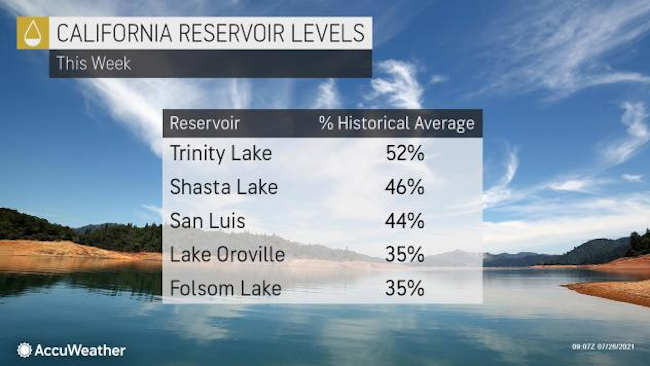

 How to resolve AdBlock issue?
How to resolve AdBlock issue? 
